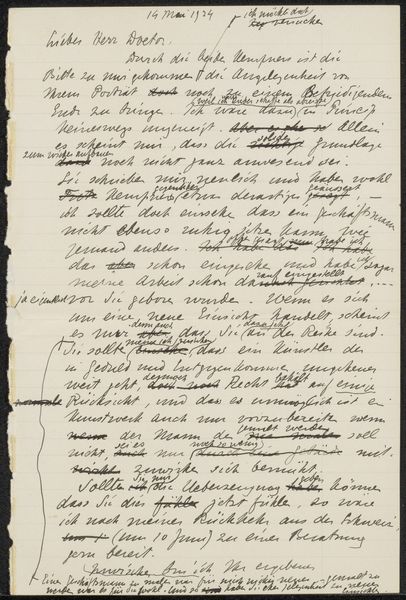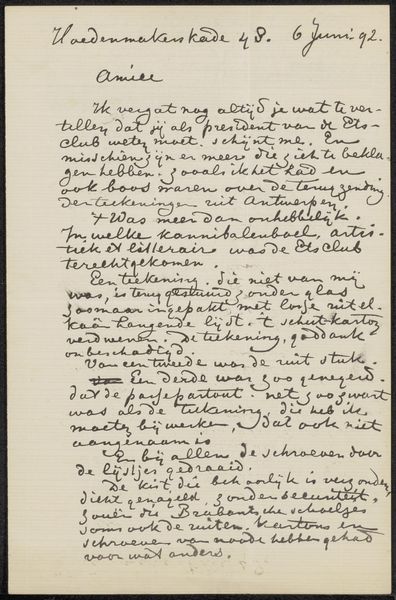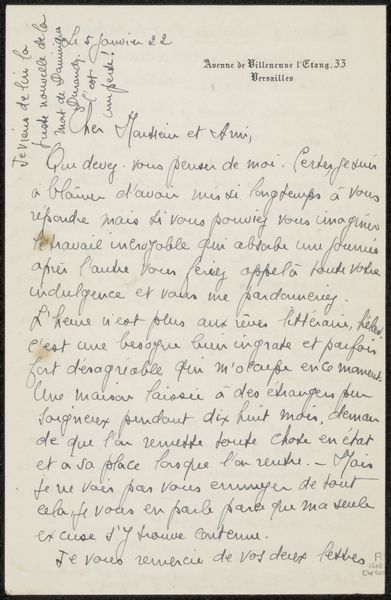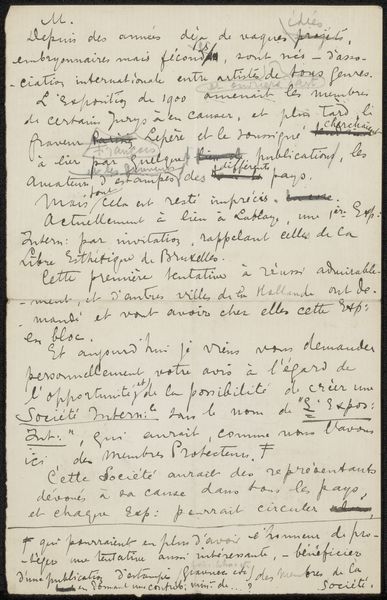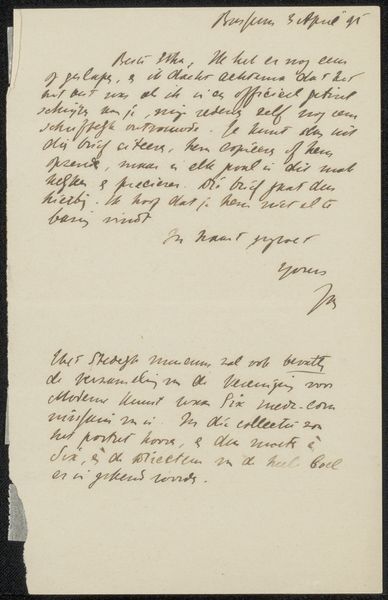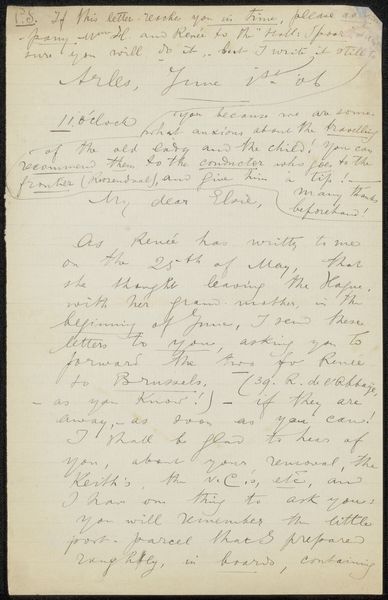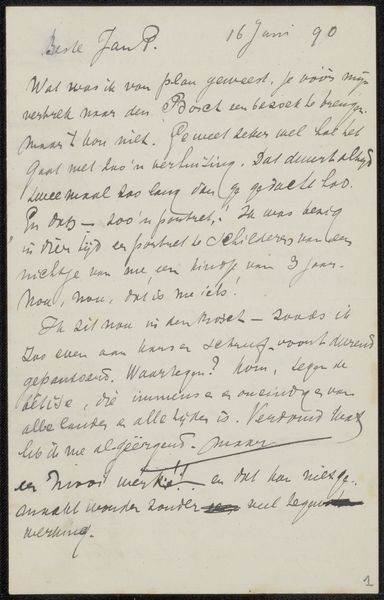
drawing, paper, ink
#
drawing
#
figuration
#
paper
#
ink
#
calligraphy
Copyright: Rijks Museum: Open Domain
Curator: This is "Aantekeningen uit archief Jan Veth," dating from after 1927. André Jolles used ink on paper to create it. Editor: My first impression is of controlled chaos. The script gives the impression of urgency and is aesthetically pleasing. Curator: Let’s delve deeper. Formally, we can discuss the dominance of line—thick and thin, varying pressure—and the texture created by the ink bleeding into the paper. The composition lacks a clear focal point, demanding the eye wander and decode. What significance might calligraphy carry? Editor: Calligraphy's appearance here invokes historical precedents while obscuring precise semantic meaning; the illegibility pushes us to confront how restricted archival material may construct legacies. Curator: Good point. We can examine the way Jolles structures visual space; dense layers that lack perspective compress both literal and metaphoric narrative potential. Do the rhythmic down-strokes reveal emotional tension? Editor: Definitely. We must think about Jolles as an intellectual figure operating inside a cultural network—notes from Jan Veth's archive represent traces not only documenting personal intellectual activity, but contributing something wider about artistic exchange, or the formation of theories around art history or folklore circulating within European circles then... Curator: That opens the door to wider dialogues surrounding the function of archiving... How the selection itself, the subjective capture of insight.. Editor: Precisely, whose voices survive and what gets lost. Thank you, that has shed some more interesting perspectives here! Curator: It has been such a pleasure examining the intrinsic values in this example, offering insight for our wider appreciation of the artistic process here.
Comments
No comments
Be the first to comment and join the conversation on the ultimate creative platform.


